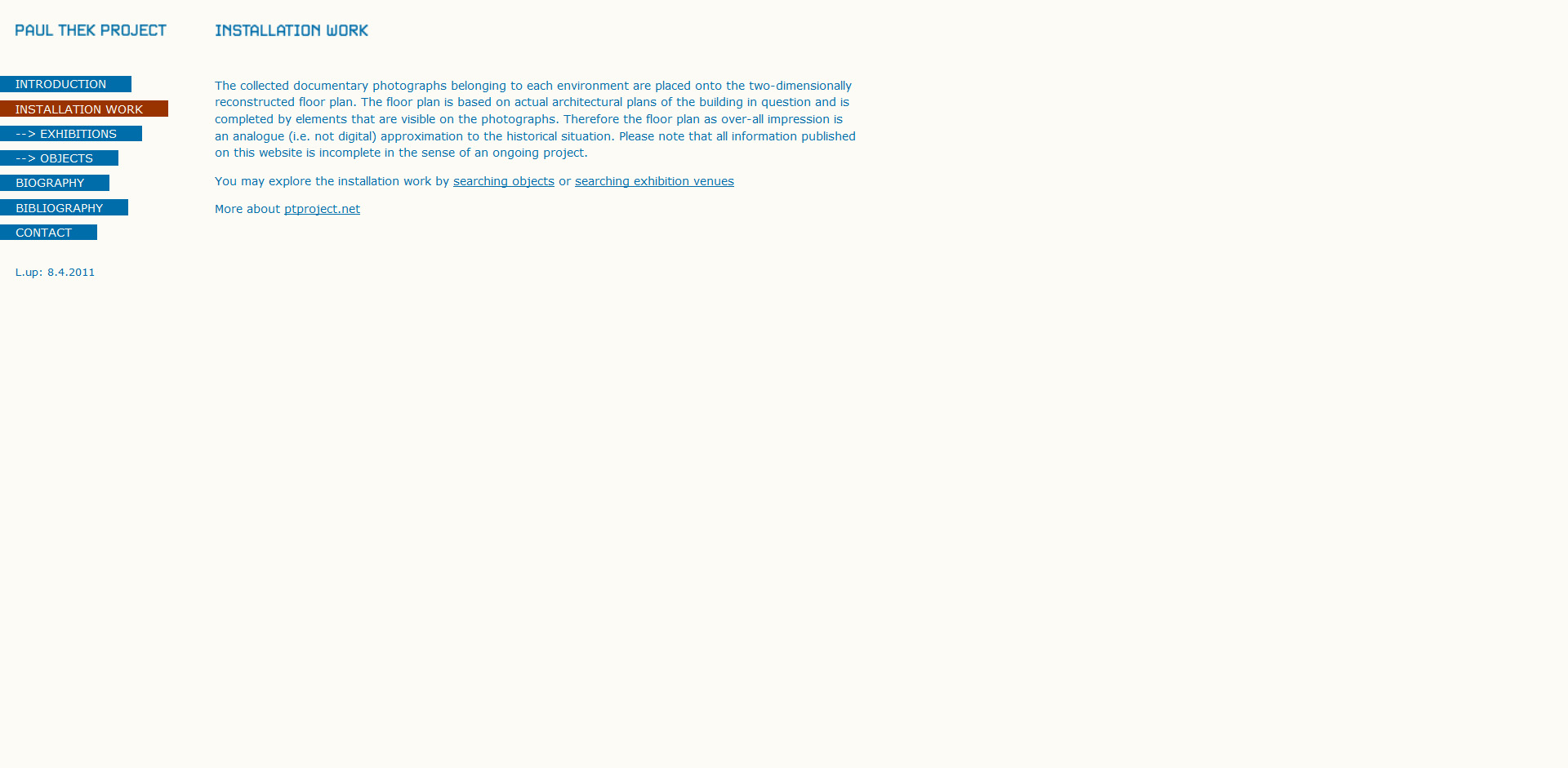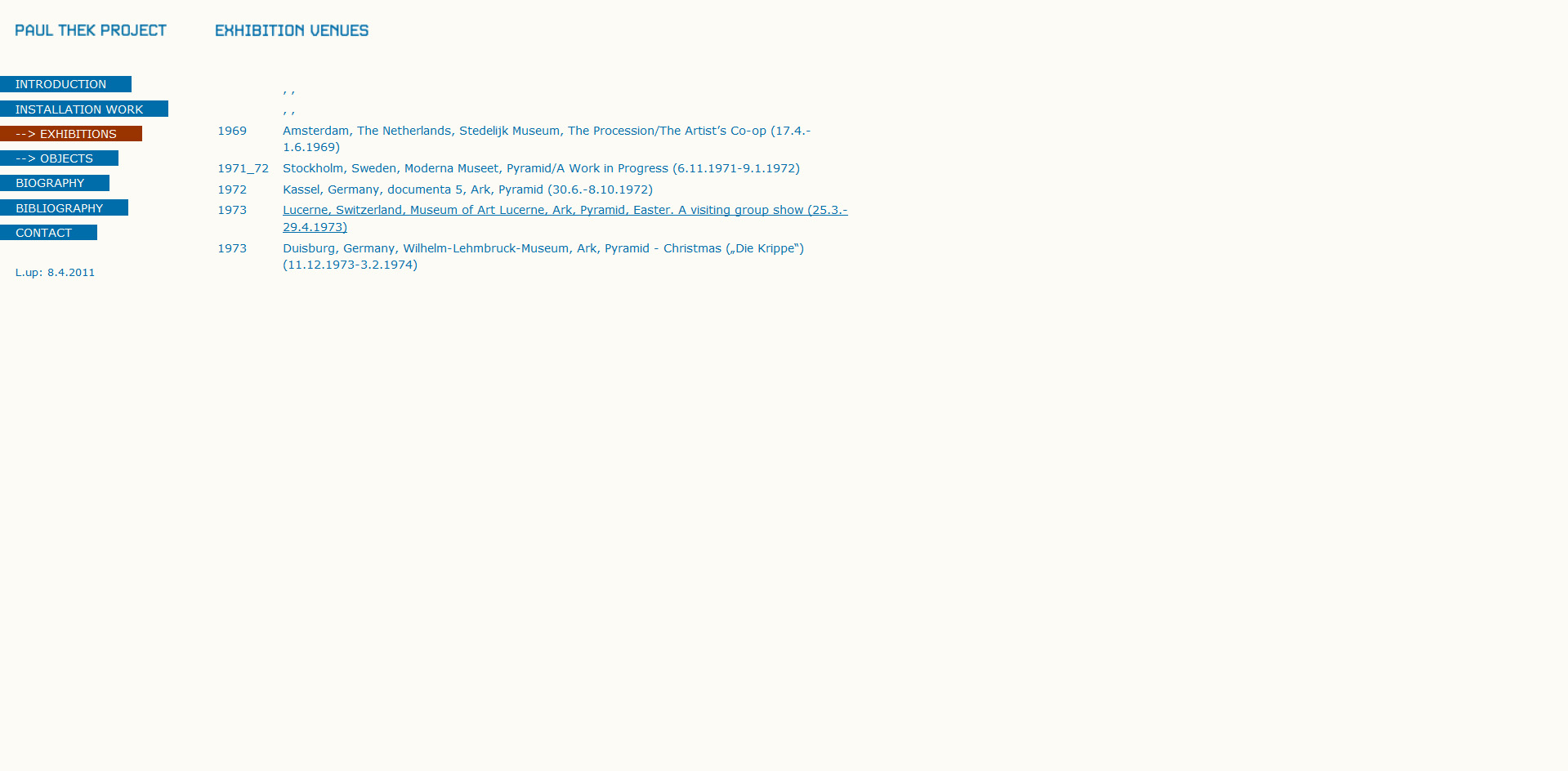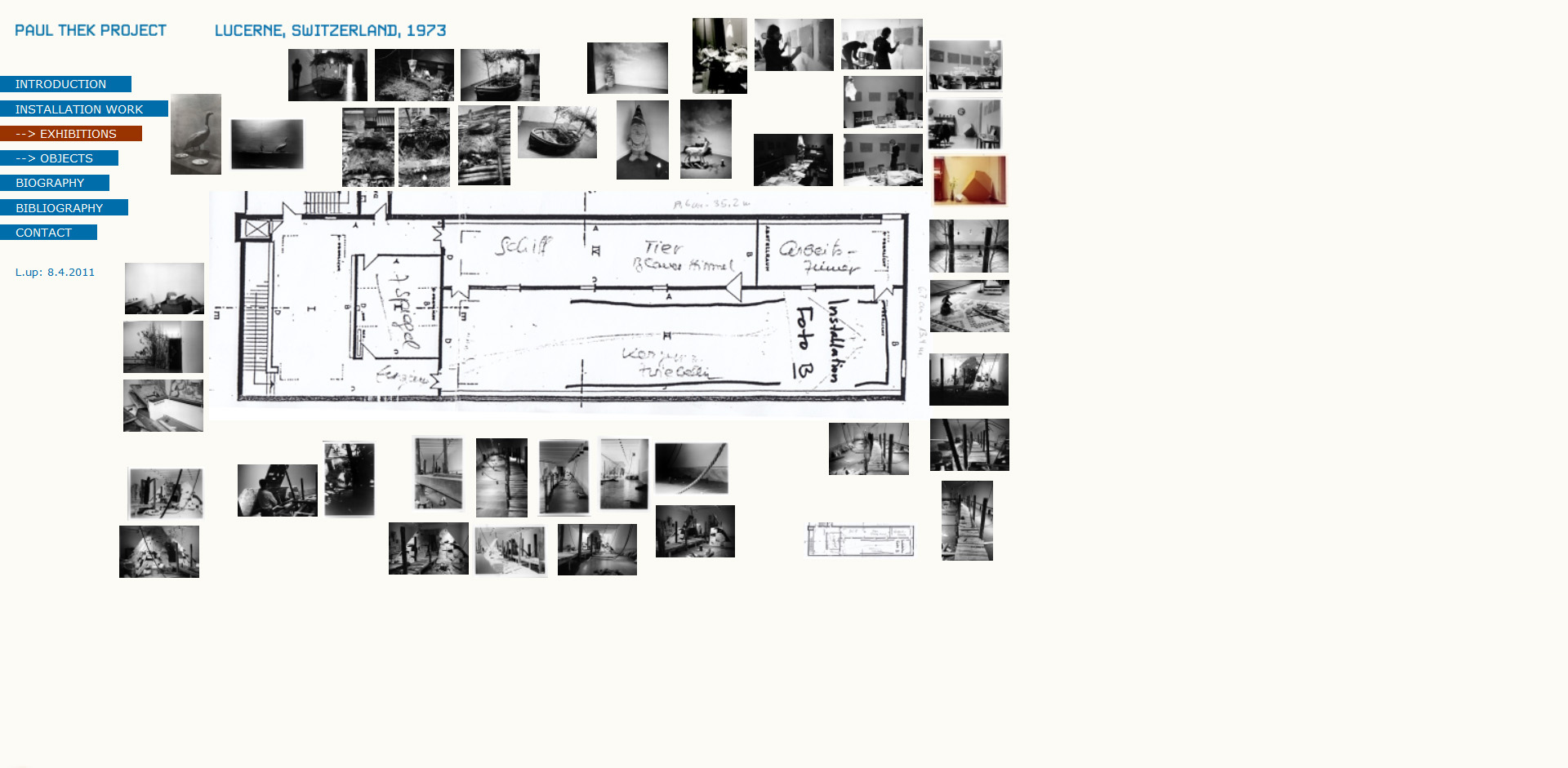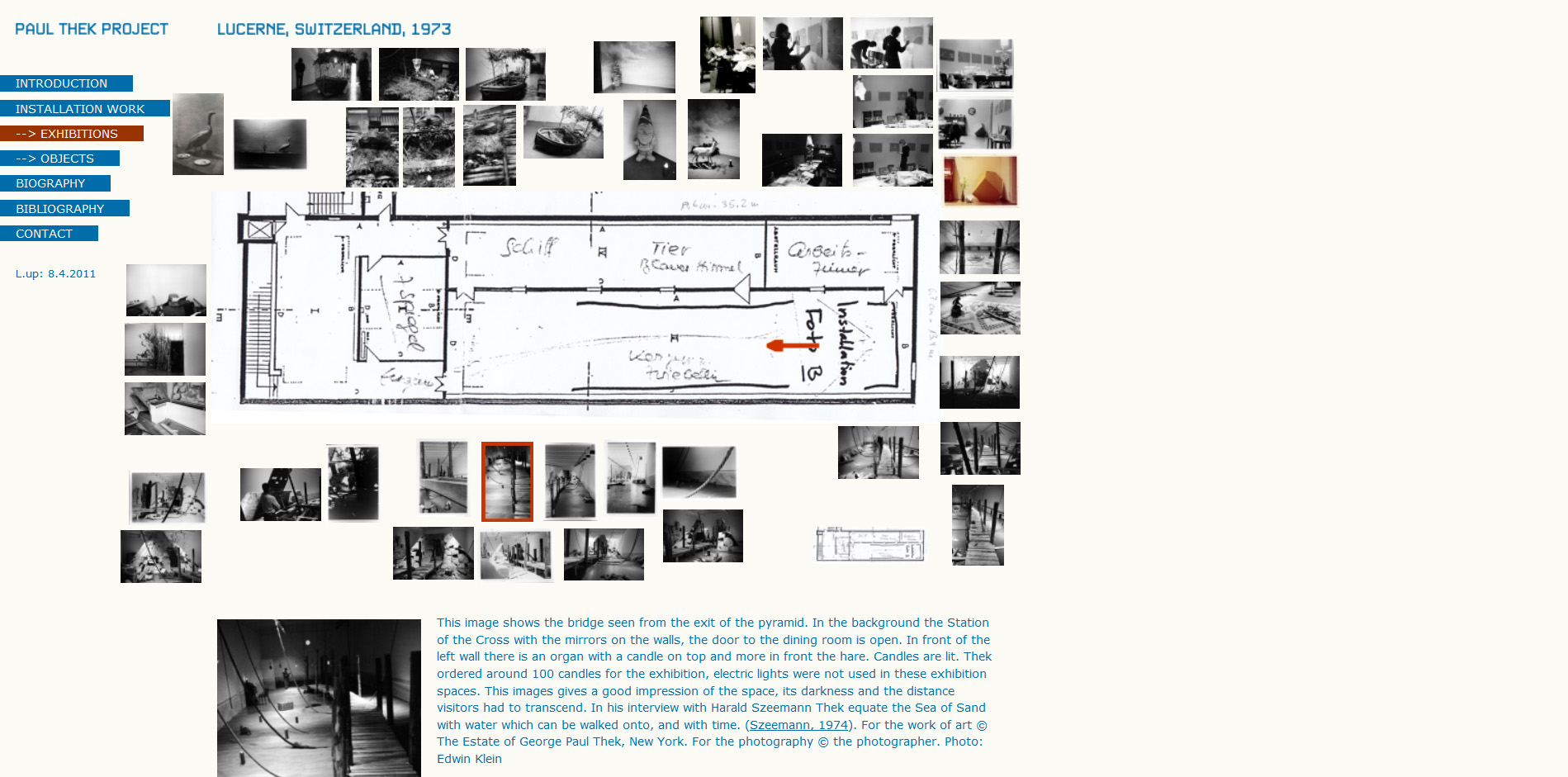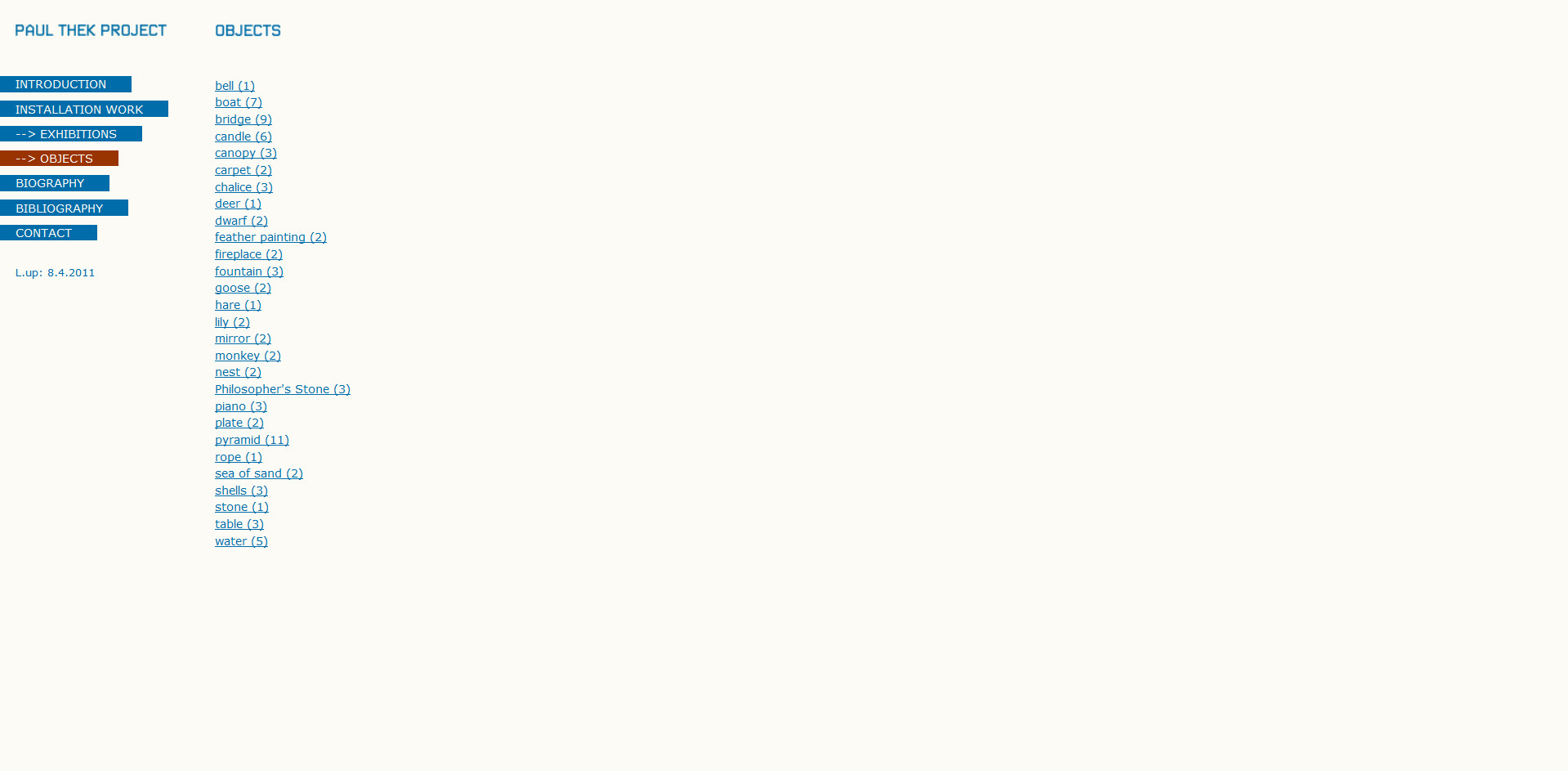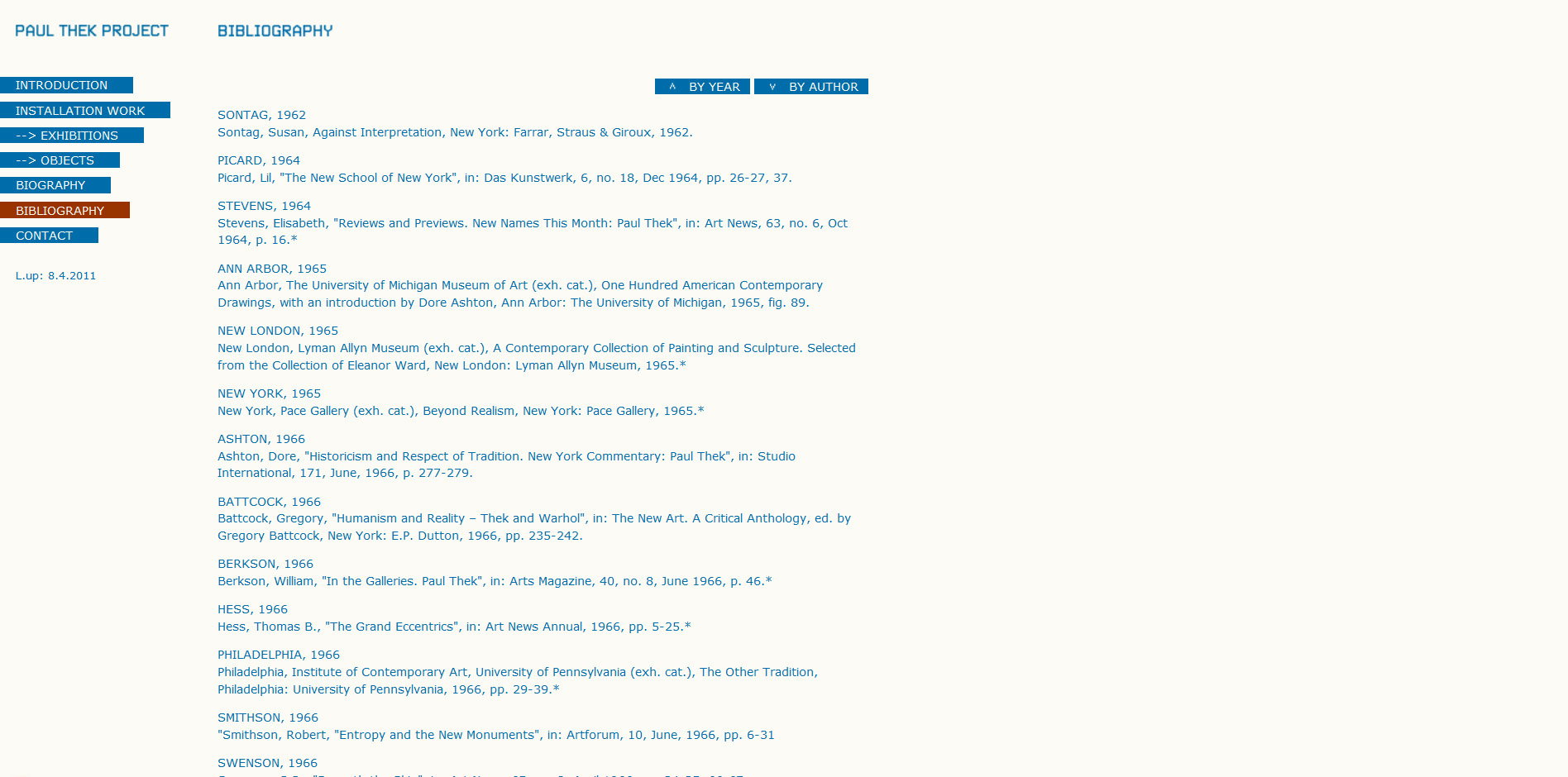THE ARTIST PAUL THEK
Thek’s artistic career began in America in the early sixties. Classically trained, he found himself confronted by the art forms of Minimalism and Conceptual art, which sought to reject any kind of tradition. After making a name for himself with realistic-looking parts of human limbs made of wax in Plexiglas boxes (Meat Pieces), with the help of similarly-minded artists he began making spatial installations in 1970. They brought the viewer into a world full of declarations of faith and Thek’s private mythologies. The experience of an environment was shaped by a processional progression through different stops, as well as the opportunity to linger in various resting-places. Thek saw this as ‘human’ art, because ‘the first thing to do was to humanize the environment; then you can look at a work of art. And, of course, you do that by turning down the lights, giving people some chairs to sit on, and not having the art restricted in any way.’ (Flood 1981, p. 54-55) In comparison to early examples of the ‘open’ work of art, or works of installation art from the 1960s period that tried to dissolve the boundary between the work of art and the viewer – one might think of Allan Kaprow’s ‘Words’ (1961) or Hélio Oiticia’s ‘Nucleus’ (1960-66), which opened up special kinds of access to the work – Paul Thek’s environments prove to be even less restricted by boundaries: Thek had so far removed himself from the idea of the artist as author that he not only tried to explode the spatial mass and in retrospect resolutely challenged the functionality of the museum, but also extended the process of the work’s origin to the artistic cooperative and the visitors to the gallery.
THE RESEARCH PROJECT
The process-based layout of the installations, in which individual elements were presented in different contexts from one place to another, proves to be a challenge to research. Only a few photographs of the installations have so far been made public, and they show only a partial picture of the works. This circumstance explains why it is that the installations live on as ‘myths’ without being tangible. It is not for nothing that Paul Thek is called an ‘artist’s artist’, and remains unknown to a wider public. The research project ‘ptproject.net’ seeks to bring these works closer to the widest possible audience using new art historical approaches, and establish a foundation for the further examination of Paul Thek’s oeuvre.
The interdisciplinary research project ‘ptproject.net’ follows on from the collection project ‘Collection Lab: Paul Thek’ initiated by the Museum of Art Lucerne, which ran from October 2004 until June 2005. After intensive work by the art-historical team (Christoph Lichtin, Peter Fischer, Sylvia Rüttimann and Susanne Neubauer) on the collection of the Museum of Art Lucerne, a closing presentation ( Lucerne 2005) was developed, which presented for discussion two central problematic areas in the installation art of the second half of the 20th century and the works of Paul Thek in particular: the issue of the possibilities of reconstructing installation art (result: exemplary presentation of the ‘Chicken Coop’, first shown in the Stedelijk Museum, Amsterdam in 1969) as well as the role of installation photography as an aid to reconstruction (result: graphic reconstruction of Paul Thek’s exhibition in Lucerne 1973).
ON THE RELATIONSHIP BETWEEN WORD AND IMAGE AND AN EXPLANATION OF THE METHOD EMPLOYED
The publication of academic research traditionally occurs in written and printed form (catalogues, textbooks and specialist journals) or in the spoken word (lectures). The text generally reveals itself to be authorial and autonomous, while the image (the reproduction) becomes a ‘pictorial visualisation’ of the text in the form of a supporting, documenting and yet mute commentary. The reproduction is seldom the springboard for a critical analysis. Here we might recall the historical and almost forgotten essay by Heinrich Wölfflin, ‘ Wie man Skulpturen aufnehmen soll’ (‘How we should receive sculptures’) (Zeitschrift für Bildende Kunst, 1896, 1897, 1914), an early critical analysis of reproduction par excellence. But in Wölfflin’s time it was still very unclear who the author of a reproduction was supposed to be – the tasks of photographer and art-historian were generally performed by a single individual, as in the cases of Richard Haman and Arthur Kingsley Porter, both pioneers of art-historical photography and the illustrated art book. In the 1920s, sculpture and architecture were what we might call the ruling disciplines of art-historical photography.
Reproduction in the extended sense means less the depiction of an object than the recording of a spatial reality. Both methods have their shortcomings: despite the democratic recording of every detail, photography can only provide a single view. In the case of Paul Thek’s installation photographs, this fact is painfully apparent. The method of critical contemplation is restricted to the precise observation of the only details revealed in the photograph.
The transposition of the content within the context of the research project ‘ptproject.net’ takes this into consideration. The goal is to collect as much pictorial information as possible, to compare and contextualise it. Since the result will necessarily be incomplete, no attempt has been made to effect a three-dimensional virtual-reality reconstruction with CAD and rendering programmes. Instead the structural advantages of the internet and online databases have been exploited. The goal was to find a form that corresponded as well as possible to academic ‘manual labour’, and one which responded self-reflexively to its own activity. This happens on the one hand within an approach descriptive of the photographic image, and on the other with the open design of the web portal that transparently encourages communal exchange.
TRANSPOSITION OF THE PICTORIAL DATABASE AND CONTEXTUALISATION OF THE CONTENT
With the help of an image and research database, photographs documenting Paul Thek’s installations of the early 1970s are recorded, critically described and placed under subject headings. Since Thek repeatedly used the same elements in different contexts, iconographic shifts in meaning can ideally be established by the application of subject headings. The installation photographs are assigned to the various floorplans of the exhibition spaces where available, and enable one to walk through the work in one’s mind. The floorplans are complemented by contextual information (biography, bibliography). As an interdisciplinary project, the website would encourage exchange with the academic community. Since it has been originally conceived as a web-based forum, members would be able to add contributions (text, image) to the website. In a second stage, these were placed on the research database by the editorial team. Both in the field of fundamental information (biography, bibliography, description of the picture) and as a platform for academic exchange, an attitude of ‘transparent work in progress’ is pursued (accuracy to the source).
STAGES OF THE PROJECT
Stage 1: web design, primary content (biography, bibliography, description of the project), publication of the data for the exhibition ‘Ark, Pyramid, Easter – a visiting group show’, Lucerne 1973.
Stage 2: publication of the data for the exhibitions in Amsterdam (1969), Stockholm (1971-72), Kassel (1972) and Duisburg (1974).
Stage 3: Publication and activation of the web forum.
(2005/2010)
PICTURE COPYRIGHT
The copyright of all published pictures rests with the institutions in question and The George Paul Thek Estate, New York. These pictures cannot be re-used or published without permission of the owner. Find more information of the copyright of this website under the Creative Commons License under Contact.
The introduction was translated from German by Shaun Whiteside.

